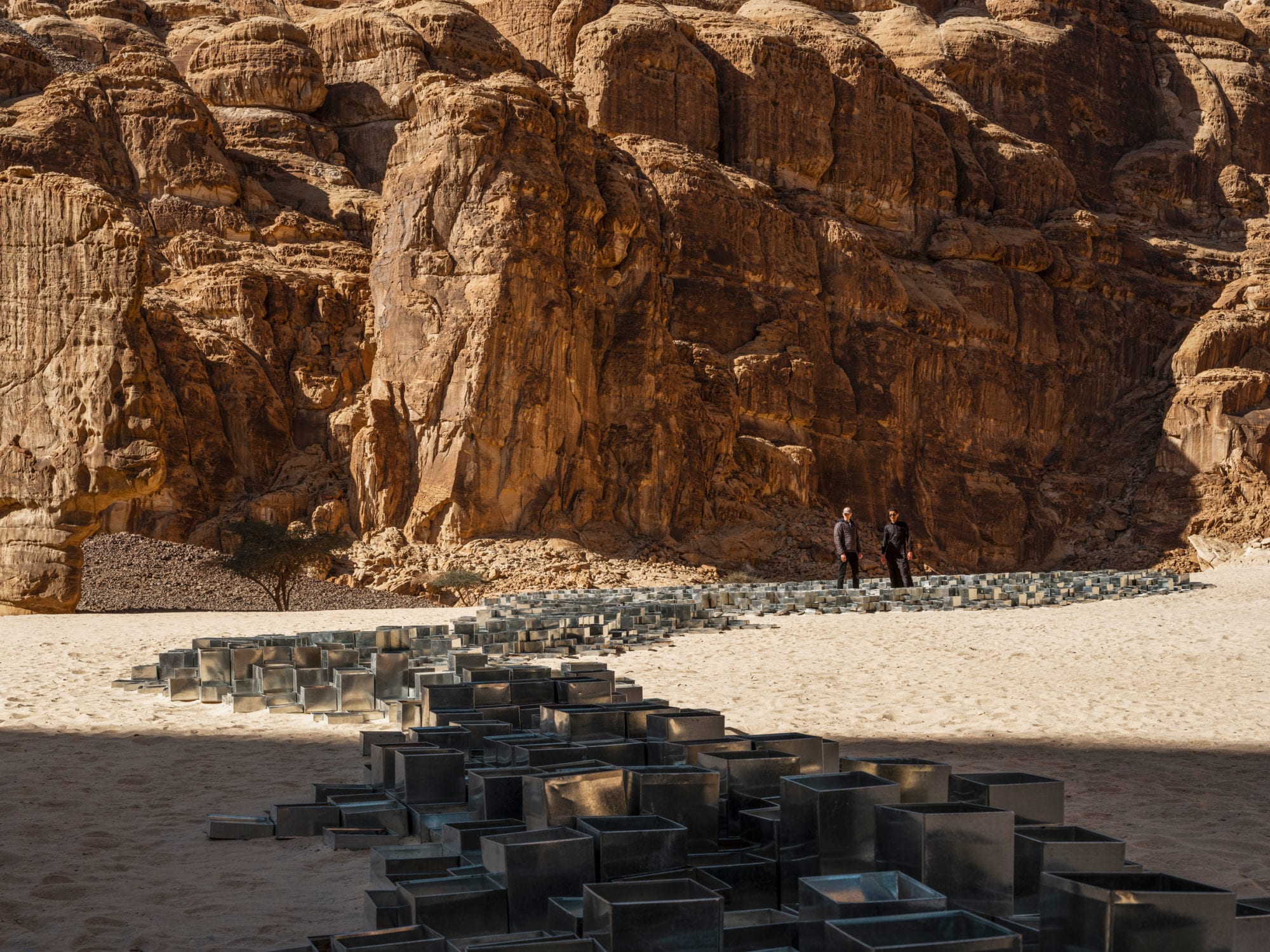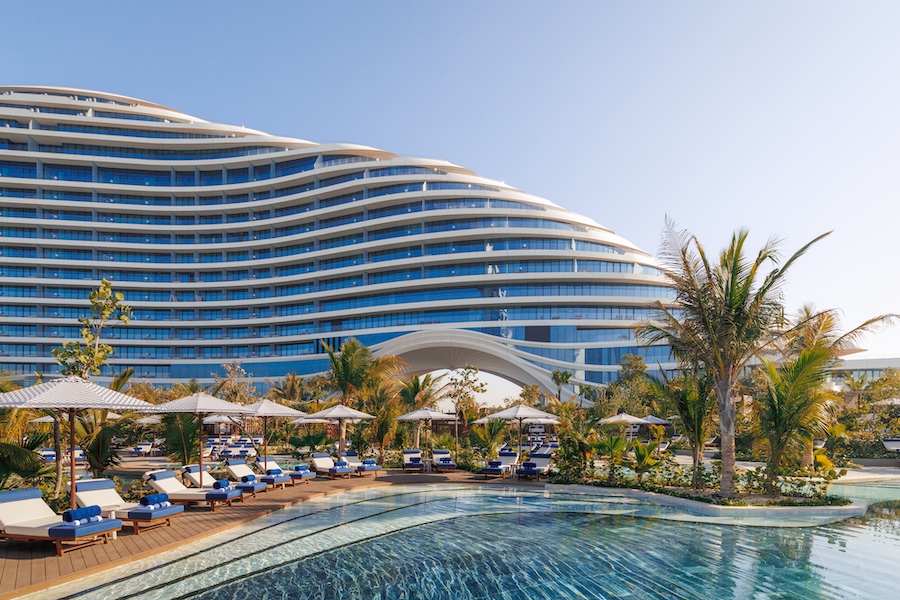Resorts cater to the creative community, Monteverdi’s L’Orfeo gets a modern upgrade; and Snøhetta goes green on the catwalk. All this and more in this week’s Five on Friday.
Ego, a kinetic sculpture for L’Orfeo, is a metaphor for life
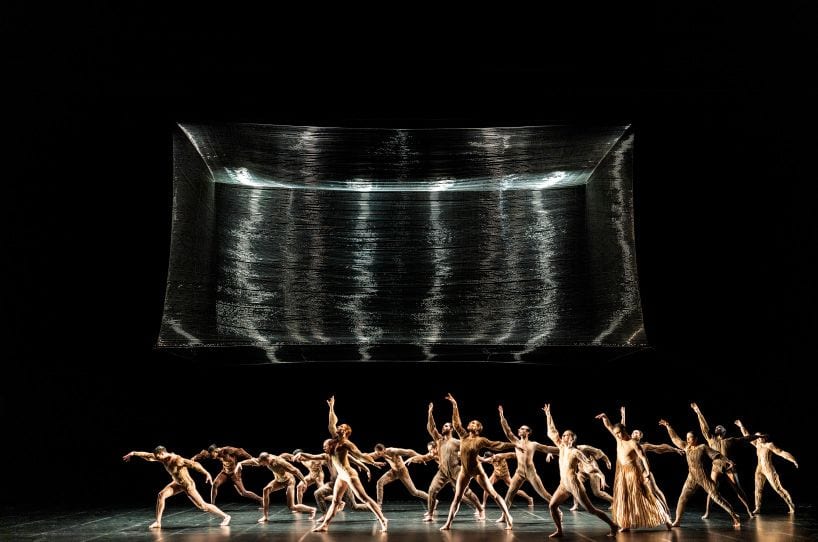
Amsterdam-based art collective Studio Drift developed Ego—a massive kinetic, time-based handwoven sculpture controlled by eight motors and a specific algorithm—for Italian composer Claudio Monteverdi’s classic 17th-century opera L’Orfeo, according to Surface. Premiering last month in the Dutch National Touring Opera, the central piece made of hair-thin woven Japanese fluorocarbon transforms in shape, allowing the artists to animate it. Initially appearing as a rigid block, it shifts to personify Orfeo’s flow of feelings through light and movement in tandem with live music. Studio Drift’s cofounder Lonneke Gordijn says she interpreted the opera in a modern context while conceiving the piece. “When everything around him collapses, he becomes super strong and goes against his nature. That’s the start of enlightenment,” she says. “I wanted to express his perspective: it’s limited for a long time, then it changes completely, giving him his freedom and vulnerabilities.”
Desert X exhibition arrives in Saudi Arabia
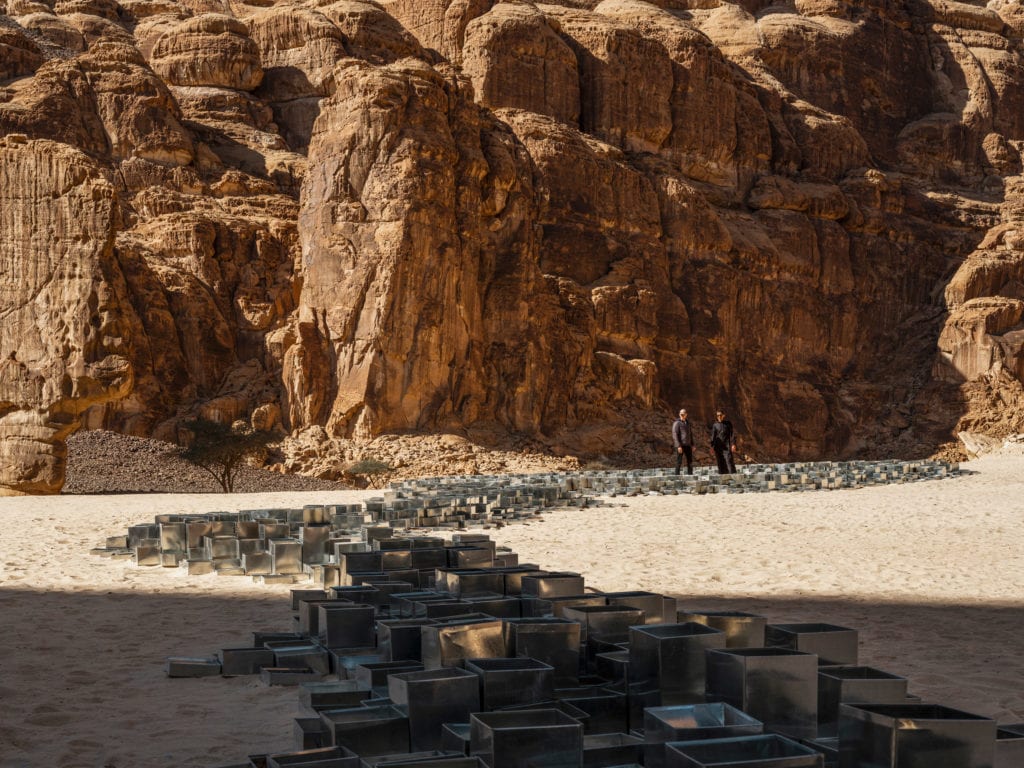
The Desert X exhibition has landed in the Saudi Arabian desert of Al Ula after two successive iterations in Coachella Valley, California. Comprising 14 large-scale installations, the Saudi version includes works from Copenhagen-based studio Superflex, local artist Rashed Al Shashai, and American sculptor Lita Albuquerque. On view through March 7th, the pieces revolve around the subjects of environmental challenges and historical significance of the location. Zahrah Al Ghamdi’s Glimpses of the Past, for example, consists of 6,000 tin date containers of different sizes laid out across 262 feet against the terrain as an ode to the region’s agricultural wealth. “Alongside international and regional artists, the show gives voice to Saudi Arabia’s dynamic artistic community, while cultivating new audiences for contemporary art in the country,” Raneem Farsi, one of the show’s co-curators, tells Dezeen.
Resorts cater to the creative community

As transformational travel becomes the buzzword du jour of the hospitality industry, resorts are taking notice, writes The New York Times. At Desa Potato Head in Bali, OMA crafted a creative community for guests and locals alike that encourages renewal via sustainability workshops, artistic programming, and architecture. It’s one of many examples, the paper points out, that are moving beyond the familiar to court creative thinkers. Ace Hotels, for example, is planning to host monthly workshops in Japanese language and culture at the Ace Hotel Kyoto, while spa brand Miraval is offering a range of classes from painting to music to photography. “Research has shown that creative expression can have a powerful impact on health and wellbeing by reducing stress and increasing positive emotions,” Simon Marxer, director of spa and wellbeing for Miraval Group, told the newspaper.
Palihotel continues its growth spurt
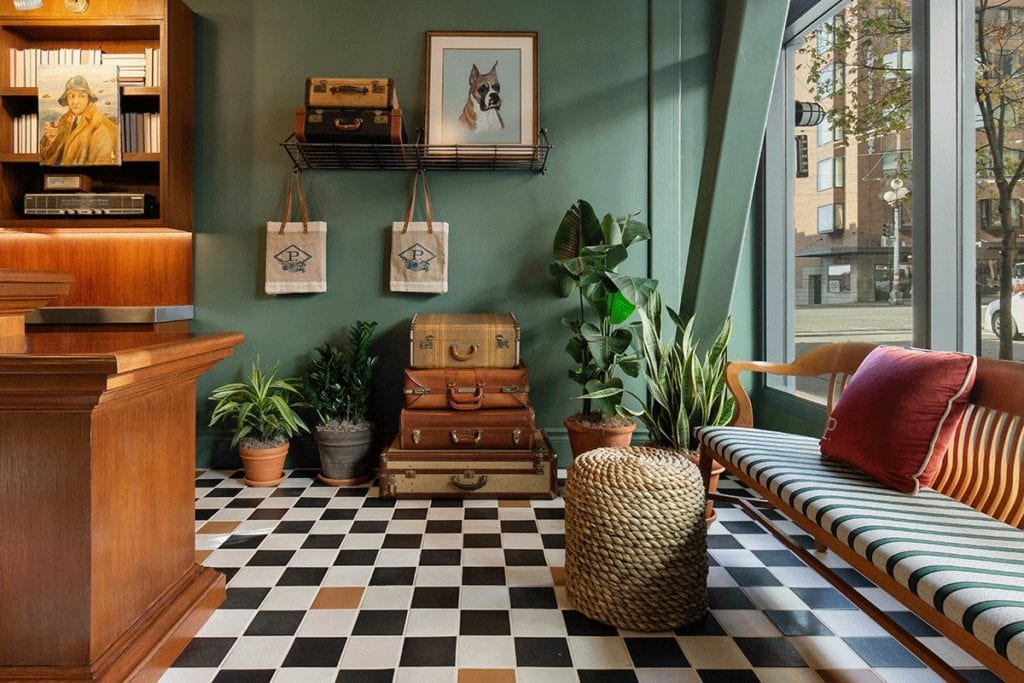
Palihotel expands to Pacific Northwest with its first hotel outside of California. Located within a 120-year-old landmark structure that used to house the Colonnade Hotel, the Palihotel Seattle has been revamped by company CEO and founder Avi Brosh. As is true with all the brand’s properties, the hotel nods to the local culture and features a vibrant and eclectic palette that recalls the city’s spirit. Since the Seattle outpost debuted in late 2018, the Paligroup continues its rapid U.S. expansion with recent openings in Miami and San Francisco.
Snøhetta goes green on the runway

Sustainability-focused Norwegian apparel brand Holzweiler unveiled its Autumn-Winter 2020 collection during Copenhagen Fashion Week last week, presented within a runway design by longtime collaborator Snøhetta. For the set décor, the studio conceived a modular greenhouse-like setting punctuated with indigenous Nordic plants, all of which have been placed for reuse in the brand’s stores after the show. “We gave Snøhetta the challenge of creating something that could be mounted and dismounted again in smaller scale,” says Holzweiler to Wallpaper. “It demands a fantastic coordination between creative ideas and the built form.”

